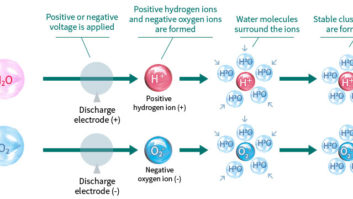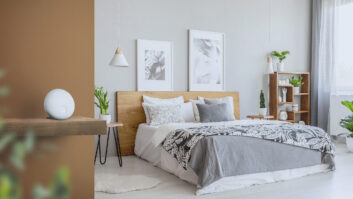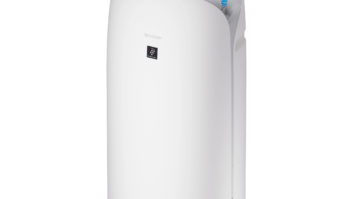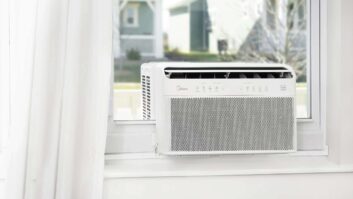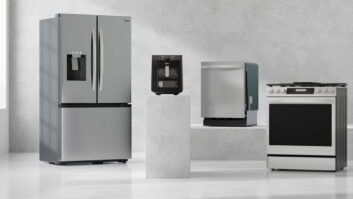Approximately 15 years ago, I decided to see an allergist to find out exactly what I was allergic to with the hope of finding a solution. The term “rescue inhaler” was not lost on me, as I’ve had allergy-induced asthma since I was a teenager. Not surprisingly, the tests came back saying I had serious Spring and Fall allergies that were related to numerous pollens and mold. I scored particularly high with the indoor allergens, dust mites, and molds. Also, I was very much allergic to cats and had only a slight allergy to dogs.
I began a regimen of allergy shots once a week for a full year, then transitioned to monthly shots for seven years. At the end of that time, my seasonal and pet allergies appeared to be cured, and my indoor allergies had all but subsided. I no longer needed my rescue inhaler. For the first time since I could remember, I could breathe through my nose when sleeping. What a relief!
In the past couple of years, however, my indoor allergies have reared again. I’m back to not being able to breathe freely, especially while in bed. I am diligent about keeping the bedroom dusted and the beddings and throw rugs clean. I even have two dog beds for Dixie so that I can always have a clean bed for her. She does smell like a dog, but I wouldn’t have it any other way. After all, dog dander was very low on my list of allergies.
In the Fall, I purchased a Sharp Plasmacluster Air Purifier. I’m embarrassed to say that I hadn’t plugged it in until two weeks ago, and Spring pollen is just a few weeks away! I had a million bad excuses for not setting it up, but mostly I thought it would just make noise and not alter my situation.
No Judgment
While researching my last blog, I interviewed Michele Ann Cassalia, Director of Marketing at the Asthma and Allergy Foundation of America (AAFA), a not-for-profit organization founded 50 years ago. Through community outreach programs, she has seen first-hand how indoor air allergens and pollutants can trigger asthma attacks.
I told Cassalia that I had an air purifier but hadn’t taken the time to set it up yet. “Everyone’s concerned about the bedding, but it also makes sense to place an air purifier at the bottom of the bed or somewhere so it is focused towards the center of the bedroom,” she says. “One third of your time is spent in the bedroom.”
At the end of our interview she urged me to set up the air purifier.
In another recent interview, Dr. Feryal Hajee, M.D., who practices allergy and immunology at Metropolitan Asthma and Allergy of Little Silver, NJ, shared this with me: “Devices [air purifiers] that capture particles of 0.3 microns and greater are considered necessary for animal allergens and mold spores. Portable in-room air cleaners with HEPA filters, especially those that filter the breathing region during sleep, appear to be beneficial.”
Is That Fresh Air?
I read the directions for the Sharp Plasmacluster Air Purifier I had purchased, and I set it up two feet from the wall so it could get proper airflow. The unit is near the wall where the head of my bed is located and about four feet from the side of my bed.
The morning I set it up, I turned the unit on “high” and closed the bedroom door. There are several settings to choose from, including “automatic.” To my surprise, it wasn’t half as loud as the fan I used during the summer. A gentle stream of air flows from the top of the unit.
As I got into bed, I turned the setting to “low.” After being in bed for a few minutes, I thought the unit must have shut off because I couldn’t hear it at all. I got up to find that it was on, but amazingly quiet, flowing a gentle stream of air.
Two nights passed, and I did not give any thought to the air purifier.
On the third night, looming deadlines caused sleeplessness. As I watched the clock, I realized I was actually breathing through my nose. This is a huge deal for me. Then I noticed I couldn’t smell my dog Dixie. I was smelling fresh air. You know that first Spring day, before the pollen hits, when you open the windows and the air is fresh and invigorating? That’s how I felt. There were no odors or faint smells at all, and I could breathe.
I should have listened to my long-time CE industry friend and trusted colleague, Peter Weedfald, the Senior Vice President of Sales & Marketing at Sharp Home Appliances. I never told him that I would do my own research and maybe purchase an air purifier. I didn’t want any pressure to buy the Sharp unit if I found something better.
Why I Purchased the Sharp Plasmacluster (PCI) Air Purifier
I was skeptical that an air purifier would provide perceptible benefits. My allergies were coming back, and if I was going to make a purchase it had to meet certain requirements. It needed to be smart and have built-in temperature, dust, and humidity sensors to monitor the air quality and automatically clean as needed. It needed to have HEPA filtration to remove 99.97 percent of airborne pollutants as small as 0.3 microns to capture pollen, dust, and pet dander. There are several models available that meet this requirement.
I didn’t want to have to remember to change a filter every three months. “Unlike most home air purifiers with HEPA filters needing to be changed every few months, the HEPA filters in Sharp’s air purification units only need to be changed every two to five years, depending on the unit. The benefits of True HEPA are there, plus the benefits of PCI,” Weedfald says.
I did some digging on Sharp’s patented Plasmacluster Ion Air Purifier technology, which creates positive and negative ions that Weedfald espoused. “They fly through the air, looking for viruses, bacteria, pet dander, mold, mildew, and odors—anything they can attach themselves to. Then the Plasmacluster Ion steals the hydrogen, and floats away as water vapor, while the remains of the now inactive pollutant simply falls apart,” says Weedfald. “Once the Plasmacluster Ions take all of the hydrogen out of a pollutant, any leftover bits normally get stuck to and whisked-away in the newly created water molecule.”
I located a white paper on the PCI technology and was duly impressed.
An interesting point I was unaware of is that an air purification system can produce ozone. Sharp’s Plasmacluster Ion air purifiers are CARB Certified (California Air Resources Board), because they produce an insignificant amount of ozone.
It is life changing that I am able to breathe freely again!




